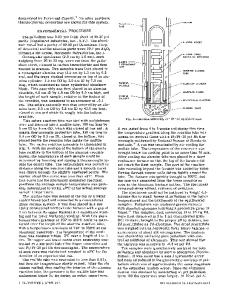L2 1 and XA ordering effect on phase stability, electronic structure, magnetic and thermodynamic properties in Scandium-
- PDF / 1,438,401 Bytes
- 11 Pages / 595.276 x 785.197 pts Page_size
- 54 Downloads / 341 Views
THE EUROPEAN PHYSICAL JOURNAL B
Regular Article
L21 and XA ordering effect on phase stability, electronic structure, magnetic and thermodynamic properties in Scandium-Based Full-Heusler Alloys Sc2CoZ (Z = Al, Ga, In) Salem Hebri 1,a and Djillali Bensaid 2,3 1 2
3
Ecole Normale Sup´erieure d’Oran, BP 1063 Saim Mohamed, Oran 31003, Algeria Department of materials sciences, Sciences institute, Belhadj Bouchaib University Center, BP 284, Ain Temouchent 46000, Algeria Laboratory of Physical Chemistry of Advanced Materials, University of Djillali Liabes, BP 89, Sidi-Bel-Abbes 22000, Algeria Received 12 June 2020 / Received in final form 27 August 2020 / Accepted 7 October 2020 Published online 2 December 2020 c EDP Sciences / Societ`
a Italiana di Fisica / Springer-Verlag GmbH Germany, part of Springer Nature, 2020 Abstract. Site preference of transition metal elements habitually determined by the number of their valence electrons has been extensively used in the design of the full-Heusler alloys X2YZ. In this work, the fullHeusler materials Sc2 CoZ (Z = Al, Ga, In) were investigated and the comparison between the L21 and XA types structures of those alloys were studied based on first-principles calculations. The ferromagnetic L21 structure is found to be energetically more favorable than the XA structure. The phonon dispersion curve predicts that all alloys are dynamically stable in L21 structure. The influence of atomic ordering with respect to the Wyckoff sites on the phase stability, electronic structure and magnetism were also analyzed. Nearly half-metallic behavior is observed for the L21 -type. However, XA-type is nonmagnetic semiconductor. For L21 -type, all alloys have a weak magnetic moment at equilibrium lattice parameter, mainly attributed to the Co atom. Thermodynamic properties of both types of structure are studied using quasi-harmonic Debye model.
1 Introduction Presently, Heusler alloys have gained a great deal of attention for their fascinating properties and possible uses in diverse engineering fields. These alloys have received interest of scientific researchers, because such compounds show novel properties that can be utilized in different applications such as spin injectors and magnetic junction tunnels [1–3]. Heusler alloys are not novel, the first one was discovered in 1903 by Fritz Heusler [4]. In 1983, de Groot et al. predicted that NiMnSb half-Heusler alloy is half-metallic [5], by means of ab-initio calculations. A remarkable movement of research has existed around these materials ever since. Thus, several theoretical and experimental works were dedicated to the study of the properties of these materials [6–10]. Many kinds of Heusler were found to be half metallic materials or spin-gapless semiconductors [11–14], which make theme good candidates for spintronic devices. Till now, only a small number of Heusler based semiconductors is reported [15]. Thus, it is therefore a good idea to look for more a
e-mail: [email protected]
Heusler compounds that display semiconductor behavior to
Data Loading...











